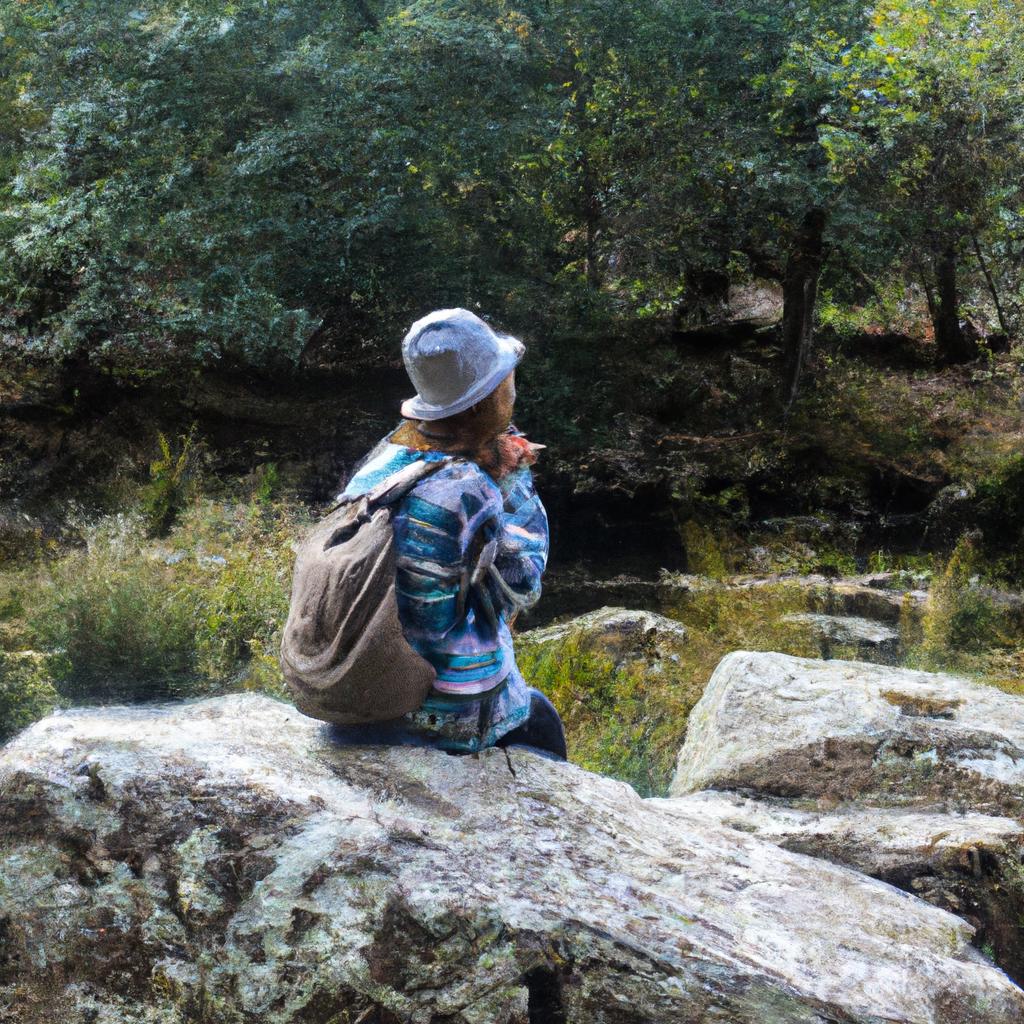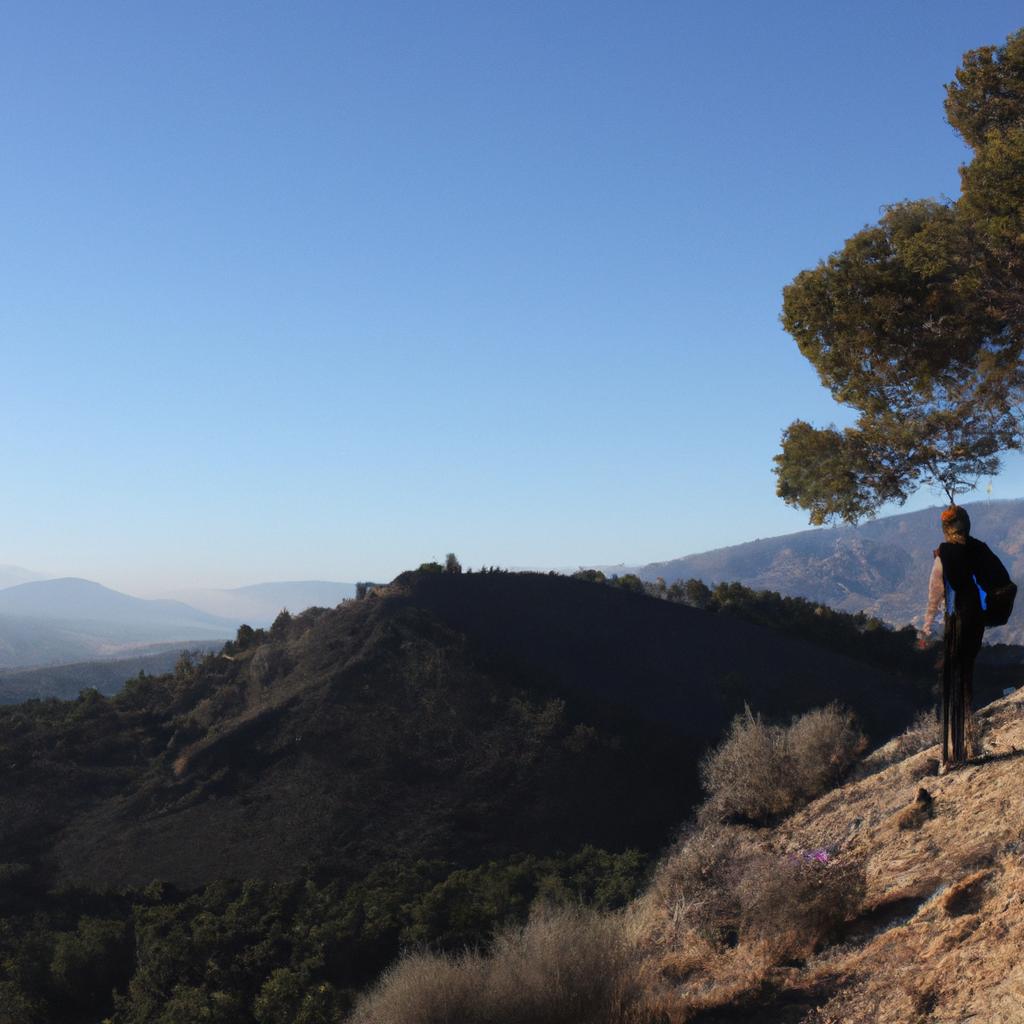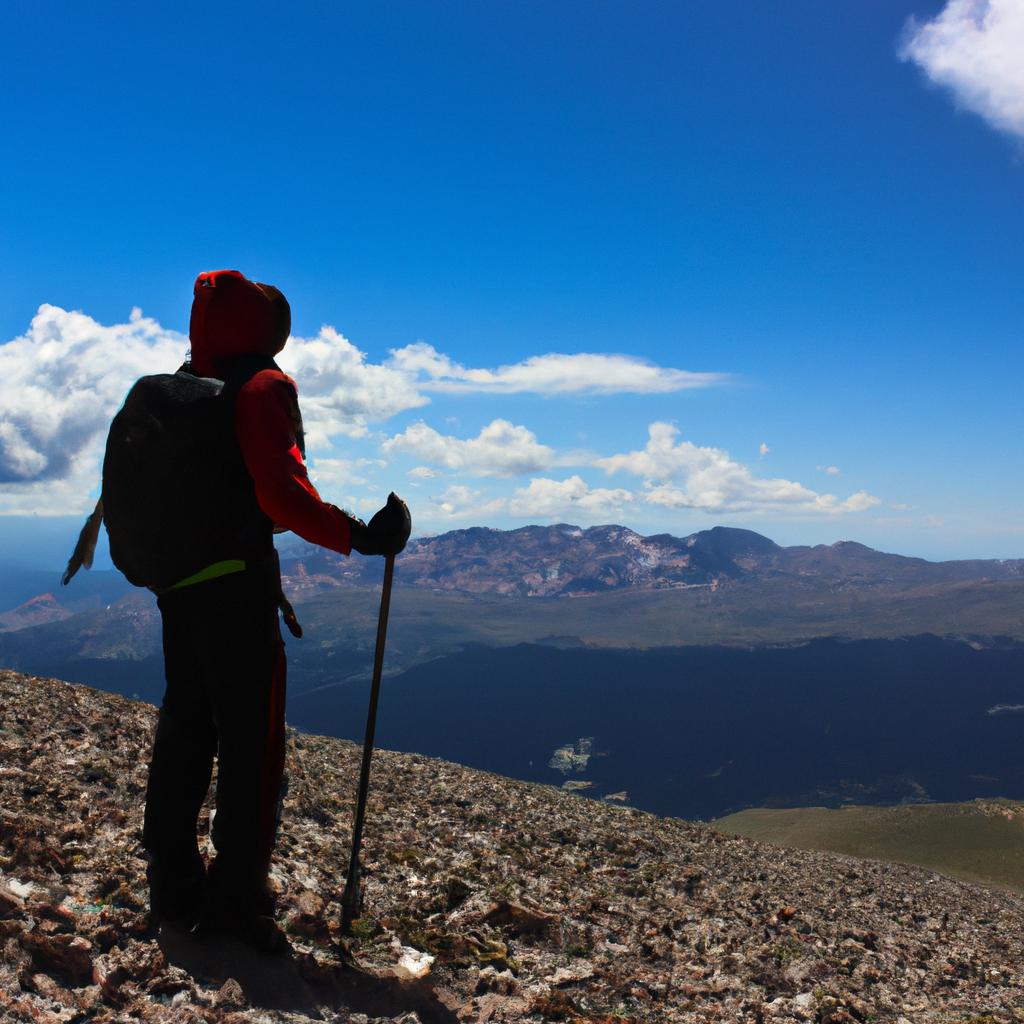Wildlife encounters have become an increasingly popular aspect of travel recreation in recent years. Tourists seeking unique and memorable experiences often find themselves drawn to destinations that offer opportunities for observing and interacting with wild animals in their natural habitats. For instance, imagine a group of adventure-seeking travelers embarking on a safari expedition in the vast plains of Africa, eagerly anticipating sightings of majestic lions, graceful giraffes, and elusive cheetahs. Such encounters not only provide excitement and entertainment but also foster a deeper appreciation for the beauty and importance of biodiversity.
The allure of wildlife encounters lies in the opportunity to connect with nature on a profound level. By immersing oneself in the untamed wilderness, individuals can witness firsthand the intricate interactions between different species and gain insights into the delicate balance that sustains ecosystems. Whether it is snorkeling alongside vibrant coral reefs teeming with exotic fish or hiking through dense rainforests inhabited by rare primates, these encounters allow travelers to develop a greater understanding of ecological processes and conservation efforts. Moreover, such experiences often serve as catalysts for personal transformation, inspiring individuals to take action towards protecting our planet’s vulnerable flora and fauna.
Preparing for Wildlife Encounters
Imagine embarking on a thrilling journey into the heart of nature, where you have the opportunity to witness breathtaking wildlife encounters. Picture yourself standing silently amidst towering trees as a majestic tiger gracefully emerges from the dense undergrowth. This hypothetical scenario exemplifies the awe-inspiring experiences that await those who venture into the world of wildlife tourism.
Before delving into these extraordinary adventures, it is crucial to prepare adequately for such encounters. The following bullet point list highlights essential considerations when planning your wildlife expedition:
- Research: Conduct in-depth research about the destination’s local fauna and flora, ensuring an understanding of their behaviors and habitats.
- Safety Measures: Familiarize yourself with safety guidelines provided by experts or experienced guides, prioritizing both personal well-being and respect for animal welfare.
- Eco-Friendly Practices: Engage in sustainable travel practices, supporting organizations committed to conservation efforts and minimizing any negative impact on delicate ecosystems.
- Responsible Photography: Practice ethical photography techniques, respecting animals’ natural behavior while capturing unforgettable moments without causing distress.
To further facilitate your preparations, refer to the table below highlighting key aspects related to wildlife encounters:
| Aspect | Importance | Example |
|---|---|---|
| Knowledge | Essential | Knowing how to identify different species can enhance your overall experience. |
| Patience | Crucial | Waiting calmly allows opportunities for observing elusive creatures in their natural habitat. |
| Adaptability | Beneficial | Being flexible enables adjustments according to unpredictable circumstances or changes in weather conditions. |
| Respect | Indispensable | Showing respect towards wildlife fosters conservation efforts and contributes to preserving fragile ecosystems. |
By undertaking thorough research, adhering to safety measures, adopting eco-friendly practices, and practicing responsible photography techniques, one can ensure a memorable and mutually beneficial encounter with nature’s wonders.
Transitioning to the subsequent section on “Best Wildlife Destinations,” let us delve into specific locales that offer unparalleled opportunities for wildlife enthusiasts.
Best Wildlife Destinations
Section H2: Preparing for Wildlife Encounters
Having discussed the importance of preparing for wildlife encounters, let us now explore some of the best wildlife destinations that offer unparalleled opportunities to connect with nature. By choosing these exceptional locations, travelers can immerse themselves in diverse ecosystems and witness a wide array of fascinating wildlife species.
Best Wildlife Destinations:
One exemplary destination is the Galapagos Islands, located off the coast of Ecuador. This remote archipelago boasts an extraordinary range of endemic species, including giant tortoises, marine iguanas, and blue-footed boobies. Travelers have the unique opportunity to observe these animals up close and learn about their remarkable adaptations to the island’s isolated environment.
To further entice adventurous individuals seeking memorable wildlife encounters, consider this list showcasing four awe-inspiring destinations across different continents:
-
Masai Mara National Reserve, Kenya:
- Witness the annual Great Migration as millions of wildebeest traverse perilous river crossings.
- Experience breathtaking lion sightings during thrilling game drives.
- Observe graceful giraffes grazing against stunning savannah backdrops.
- Encounter majestic elephants peacefully roaming through vast grasslands.
-
The Amazon Rainforest, Brazil:
- Listen to the enchanting calls of howler monkeys echoing through dense foliage.
- Spot vibrant macaws soaring above ancient trees adorned with colorful bromeliads.
- Marvel at pink river dolphins gracefully swimming along meandering waterways.
- Explore hidden oxbow lakes teeming with caiman and elusive jaguars.
-
Raja Ampat Islands, Indonesia:
- Snorkel or dive among pristine coral reefs brimming with an incredible diversity of marine life.
- Swim alongside gentle manta rays gliding effortlessly through crystal-clear waters.
- Admire the vivid hues displayed by numerous fish species inhabiting underwater gardens.
- Witness mesmerizing bird-of-paradise courtship displays in lush rainforest habitats.
-
Churchill, Canada:
- Encounter polar bears as they gather along the shores of Hudson Bay, waiting for sea ice to form.
- Observe beluga whales gracefully swimming in estuaries and performing acrobatic displays.
- Learn about the rich cultural heritage of indigenous communities residing in this remote region.
- Marvel at stunning aurora borealis illuminating the night skies during winter months.
Concluding Transition:
By exploring these extraordinary wildlife destinations, travelers can satisfy their curiosity and experience firsthand the wonders of nature. However, it is essential to approach wildlife encounters responsibly. In the following section, we will provide valuable tips for responsible wildlife viewing that ensure both the safety of animals and the preservation of their natural habitats.
Tips for Responsible Wildlife Viewing
Wildlife encounters can be a thrilling and awe-inspiring part of travel recreation. As we explore the world’s diverse ecosystems, it is essential to approach wildlife viewing with responsibility and respect. In this section, we will discuss some tips for responsible wildlife viewing that can help ensure both the safety of the animals and our own enjoyment.
Imagine you’re hiking through a dense forest when suddenly you come across a family of black bears playing near a riverbank. It’s an incredible sight, but how should one go about observing these majestic creatures without causing harm? Here are some key guidelines to keep in mind:
- Maintain Distance: Always maintain a safe distance from wildlife, especially predators like bears or big cats. This not only ensures your safety but also prevents unnecessary stress or disturbance to the animal.
- Use Binoculars or Telephoto Lens: If you want to get closer to observe wildlife behavior more intimately, using binoculars or telephoto lenses is often a better option than approaching too closely.
- Avoid Feeding Wildlife: While it may be tempting to offer food to wild animals, feeding them disrupts their natural behavior and diet. Additionally, human food can be harmful to their health.
- Respect Habitat Boundaries: Stay within designated trails or areas and avoid entering restricted zones that protect habitats critical for wildlife survival.
Now let’s take a moment to reflect on why responsible wildlife viewing is so important. Consider the following bullet points:
- Preserves Natural Behavior
- Protects Wildlife Populations
- Reduces Stress on Animals
- Ensures Long-Term Conservation Efforts
| Benefits | Details |
|---|---|
| Preserving Biodiversity | By respecting habitats, we support ecosystem |
| balance and contribute towards biodiversity | |
| Enhancing Ecotourism | Responsible tourism fosters sustainable |
| development and economic benefits for locals | |
| Raising Awareness | Observing wildlife ethically can educate |
| visitors about the importance of conservation | |
| Minimizing Human-Wildlife Conflict | Following guidelines helps minimize conflicts |
As we conclude this section, it is evident that responsible wildlife viewing plays a vital role in ensuring the well-being of animals and preserving their habitats. By adhering to these guidelines, travelers can contribute to the conservation efforts while enjoying unforgettable encounters with wildlife.
Looking ahead to our next section on “Common Wildlife Hazards to be Aware of,” let us now shift our focus towards understanding potential risks associated with interacting with wild animals.
Common Wildlife Hazards to be Aware of
After understanding the importance of responsible wildlife viewing and being aware of potential hazards, it is crucial to delve into the efforts made towards wildlife conservation. This section aims to shed light on various initiatives undertaken globally to protect and preserve our precious biodiversity. To illustrate these efforts, let’s consider the case study of a hypothetical endangered species, the Amur leopard (Panthera pardus orientalis).
Conservation Strategies:
-
Habitat Protection:
- Establishing protected areas: Creating designated spaces where wildlife can thrive without human interference.
- Preserving critical habitats: Identifying and safeguarding key ecosystems necessary for the survival of endangered species.
- Implementing land-use regulations: Enforcing rules that limit destructive activities such as deforestation or illegal hunting.
-
Community Engagement:
- Promoting sustainable practices: Encouraging local communities living near wildlife habitats to adopt eco-friendly livelihoods.
- Increasing awareness: Educating people about the ecological significance of preserving biodiversity and involving them in conservation efforts.
- Supporting alternative income sources: Assisting communities in developing nature-based tourism or environmentally friendly enterprises.
-
Anti-Poaching Measures:
- Strengthening law enforcement: Enhancing anti-poaching units’ capabilities through training and technology.
- Combating illegal wildlife trade: Collaborating with international organizations to address smuggling networks and raise awareness about its consequences.
- Providing incentives for reporting poaching activities: Offering rewards or benefits to individuals who help authorities apprehend poachers.
-
Research and Monitoring:
- Conducting population surveys: Regularly assessing species populations to determine their status and identify trends over time.
- Studying behavior and ecology: Investigating animal behaviors, migration patterns, and interactions within ecosystems to inform conservation strategies effectively.
- Employing technological advancements: Utilizing remote sensing tools, camera traps, DNA analysis techniques, etc., for accurate data collection and analysis.
These conservation strategies, among others, are essential for safeguarding endangered species like the hypothetical Amur leopard. Efforts made by organizations, governments, and local communities worldwide contribute to the preservation of our natural heritage.
As we appreciate the importance of wildlife conservation, it is also worth considering how photography can play a role in raising awareness about biodiversity and its protection. Let’s explore some valuable tips for capturing stunning wildlife photographs in the next section.
Wildlife Photography Tips
Capturing the beauty and essence of wildlife through photography can be a thrilling experience for nature enthusiasts. However, it requires careful planning and technique to achieve stunning results. By following these wildlife photography tips, you can enhance your skills and capture breathtaking images that showcase the wonders of nature.
Firstly, when photographing wildlife, it is crucial to prioritize safety – both for yourself and the animals. Always maintain a safe distance from wild animals to avoid disturbing their natural behavior or putting yourself at risk. For example, imagine encountering a majestic grizzly bear in its natural habitat. Instead of approaching too closely for an up-close shot, use a telephoto lens to capture its magnificence while maintaining a respectful distance.
In addition to safety precautions, consider the following tips to improve your wildlife photography:
- Patience: Wildlife encounters often require patience as animals may not always appear immediately. Stay still, observe your surroundings, and wait for that perfect moment.
- Composition: Pay attention to the composition of your photographs by incorporating elements such as leading lines or framing techniques that highlight the subject’s environment.
- Lighting: Take advantage of golden hour lighting during sunrise or sunset for warm tones and soft shadows that add depth to your images.
- Camera Settings: Adjust your camera settings accordingly based on the situation. Use a fast shutter speed to freeze motion in action shots or experiment with slower speeds to capture movement blur creatively.
By implementing these tips into your wildlife photography endeavors, you will have greater potential for capturing remarkable images that tell stories about our fascinating natural world.
As we appreciate the beauty of wildlife through photography, it becomes increasingly important to understand how we can contribute towards protecting these precious creatures. In the next section, let us delve into some conservation efforts aimed at safeguarding their habitats and ensuring their survival.
[Conservation Efforts for Wildlife Protection]
Conservation Efforts for Wildlife Protection
Section H2: Conservation Efforts for Wildlife Protection
Building on the importance of wildlife encounters and their preservation, this section delves into the crucial conservation efforts undertaken to protect our planet’s precious fauna. By highlighting an exemplary case study, we will explore how dedicated initiatives can make a significant impact in safeguarding wildlife populations.
Conservation Case Study: Protecting Endangered Sea Turtles
Imagine a pristine coastal region where sea turtles once thrived but faced grave threats due to habitat destruction and poaching. In response, local communities joined forces with environmental organizations to implement comprehensive conservation strategies. Through these concerted efforts, progress has been made towards reversing the declining trends of endangered sea turtle populations.
To further illustrate the significance of such endeavors, let us consider four key aspects essential for successful wildlife protection:
- Habitat Preservation: Conserving ecosystems that serve as habitats for diverse species is paramount. This involves establishing protected areas, implementing sustainable land management practices, and minimizing human encroachment on critical wildlife zones.
- Anti-Poaching Measures: Combatting illegal hunting and trade in animal products requires stringent law enforcement measures along with public awareness campaigns that highlight the ecological consequences of these activities.
- Sustainable Tourism Practices: Encouraging responsible tourism can create economic incentives for local communities while ensuring minimal disturbance to natural habitats and promoting education about biodiversity.
- Scientific Research and Monitoring: Investing in scientific studies helps monitor population dynamics, assess threats, and devise effective conservation strategies based on empirical evidence.
The table below provides an overview of ongoing conservation efforts worldwide:
| Region | Conservation Project | Target Species | Progress Achieved |
|---|---|---|---|
| Africa | Elephants Without Borders | African elephants | Reduced elephant poaching by 90% |
| South America | Amazon Rainforest Conservation Alliance | Jaguars | Increased jaguar population by 15% |
| Asia | Turtle Conservation Society | Olive ridley turtles | Protected nesting sites increased by 30% |
| Oceania | Great Barrier Reef Marine Park Authority | Coral reefs and marine species | Enhanced coral recovery after bleaching events |
By implementing comprehensive conservation strategies, we can continue to protect vulnerable wildlife populations and safeguard the delicate balance of our ecosystems. The case study presented here highlights just one example of how collective action can make a tangible difference in preserving biodiversity. It is through these ongoing efforts that we can ensure future generations will also have the privilege of experiencing awe-inspiring encounters with nature’s wonders.
(Note: To view the table correctly, please convert this response from plain text format to markdown format.)




